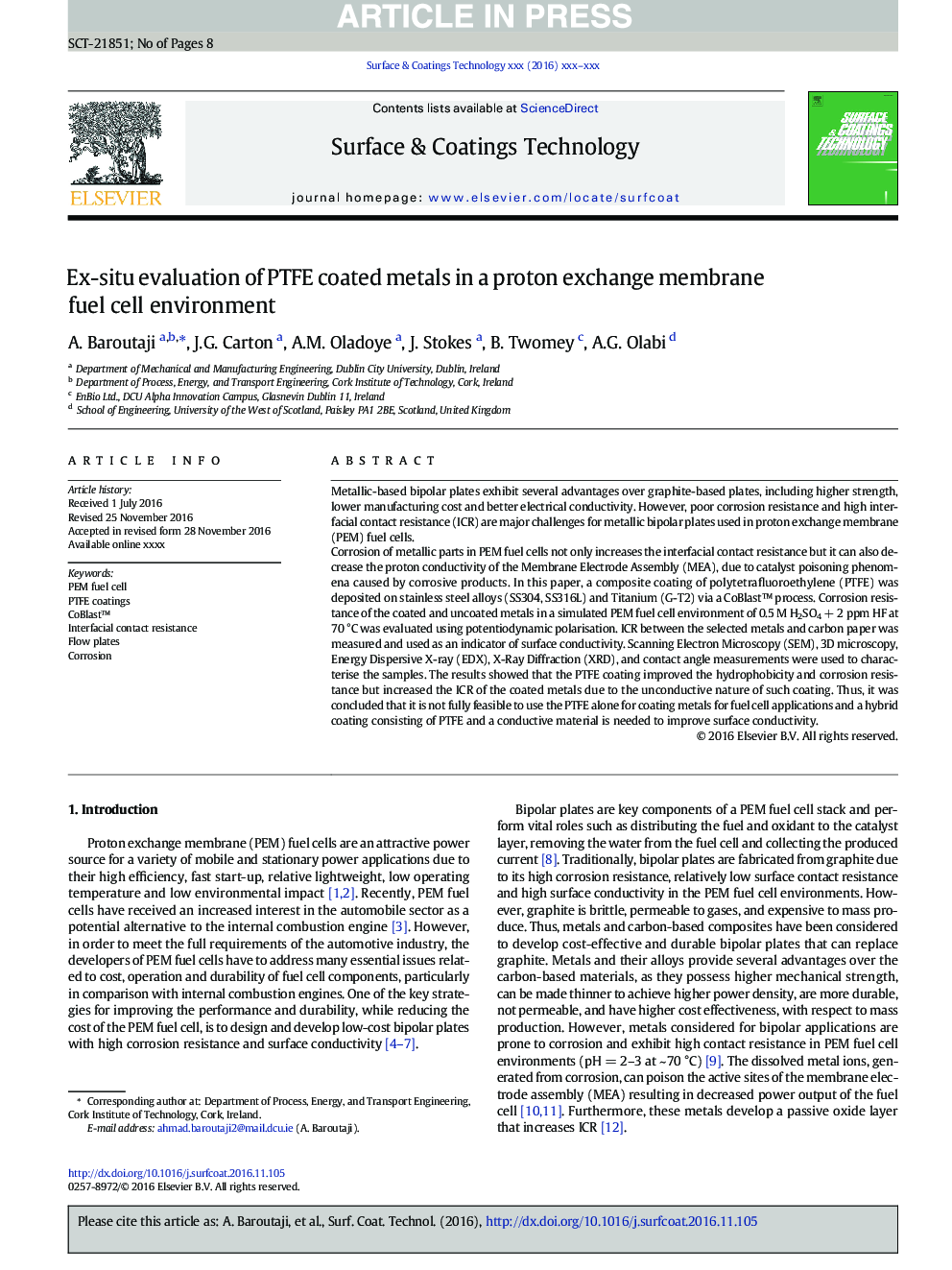| Article ID | Journal | Published Year | Pages | File Type |
|---|---|---|---|---|
| 5465034 | Surface and Coatings Technology | 2017 | 8 Pages |
Abstract
Corrosion of metallic parts in PEM fuel cells not only increases the interfacial contact resistance but it can also decrease the proton conductivity of the Membrane Electrode Assembly (MEA), due to catalyst poisoning phenomena caused by corrosive products. In this paper, a composite coating of polytetrafluoroethylene (PTFE) was deposited on stainless steel alloys (SS304, SS316L) and Titanium (G-T2) via a CoBlast⢠process. Corrosion resistance of the coated and uncoated metals in a simulated PEM fuel cell environment of 0.5 M H2SO4 + 2 ppm HF at 70 °C was evaluated using potentiodynamic polarisation. ICR between the selected metals and carbon paper was measured and used as an indicator of surface conductivity. Scanning Electron Microscopy (SEM), 3D microscopy, Energy Dispersive X-ray (EDX), X-Ray Diffraction (XRD), and contact angle measurements were used to characterise the samples. The results showed that the PTFE coating improved the hydrophobicity and corrosion resistance but increased the ICR of the coated metals due to the unconductive nature of such coating. Thus, it was concluded that it is not fully feasible to use the PTFE alone for coating metals for fuel cell applications and a hybrid coating consisting of PTFE and a conductive material is needed to improve surface conductivity.
Related Topics
Physical Sciences and Engineering
Materials Science
Nanotechnology
Authors
A. Baroutaji, J.G. Carton, A.M. Oladoye, J. Stokes, B. Twomey, A.G. Olabi,
